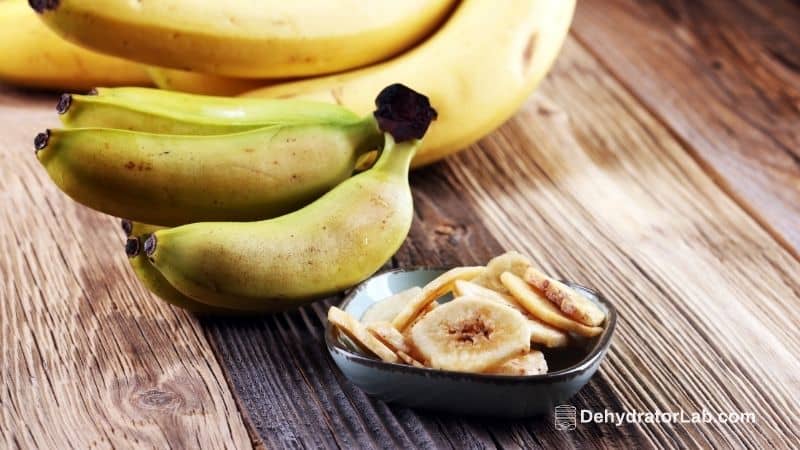Looking for ways to extend the shelf life of your food products and prevent spoilage? Two popular options are moisture absorbers and oxygen absorbers.
These handy little packs can help regulate the humidity and oxygen levels within a container, preventing excess moisture and oxygen absorption that can cause spoilage.
In this article, we’ll explore the benefits and differences between moisture absorbers and oxygen absorbers, as well as provide tips on how to use them effectively. We’ll also discuss DIY options and alternatives to oxygen absorbers, such as vacuum sealing.

As an Amazon Associate, I earn from qualifying purchases. If you make a purchase after clicking on a link I may earn a small commission at no extra cost to you if items are purchased.
So, whether you’re an avid home cook or a prepper looking to extend the shelf life of your emergency food supply, keep reading to learn more about these preservation methods.
In this article:
Moisture Absorber (Silica Gel) Benefits
Let’s begin with a discussion on the benefits of using a moisture absorber, also referred to as a desiccant or silica gel pack. This pack is comprised of tiny silica beads that are transparent or resemble terra cotta or sand balls, as silica is the main component of these materials.
The purpose of a moisture absorber is to regulate the humidity levels within a container, such as a jar, in order to prevent the absorption of excess moisture, especially if you frequently open and close the jar.
This is especially helpful for products such as onion powder, which is notorious for clumping due to its high sugar content and susceptibility to moisture in the air. To prevent this from happening, you can use an oxygen absorber along with a moisture absorber to help regulate the moisture levels and prevent clumping.
It is important to note that a moisture absorber does not vacuum seal or regulate oxygen levels, and should not be solely relied upon for long-term storage.
However, one of the advantages of a moisture absorber is that it can be recharged by placing it on a cookie sheet in an oven at 250 degrees Fahrenheit for two to three hours.
Silica packets can be found in various products, such as vitamins, shoe boxes, wallets, and purses. It is crucial to exercise caution when reusing silica packets and only do so if they are food-safe and their previous environment is known.
Refreshing them can also be questionable, as the environmental conditions they have been exposed to may affect their efficacy. These packets may not always be labeled as food-safe, but rather as part of the packaging in which they were included.
It’s impossible to know where they have been stored or what they have been in contact with, so it’s not recommended to use them with food products. It’s better to dispose of them properly and use only food-safe silica packets for food storage.
The National Center for Home Food Preservation encourages the use of moisture absorbers in food storage, but it is not mandatory. Ultimately, the decision to use a moisture absorber should be based on personal preference and the level of security desired in food storage.
Oxygen Absorber
The purpose of an oxygen absorber is to eliminate oxygen from a container, which it does exclusively. Although the term “vacuum sealing” is frequently used interchangeably with it, the two are not identical, but share certain similarities.
With a vacuum sealer, excess air is removed from a jar as thoroughly as is possible with a manual or mechanical home device, which only eliminates oxygen. The use of a mylar bag in conjunction with a vacuum sealer can occasionally result in the appearance of the bag shrinking as oxygen is removed, but this outcome is not always guaranteed.
It may indicate that the oxygen absorber has already been used and charged, which can make a difference, but this information can be ascertained before insertion. The distinction between a used and an unused oxygen absorber can be determined by squeezing the pouch.
If the contents feel powdery and movable, with a crumbly texture and plenty of movement, it is still effective. If it is a hard-packed, immobile pillow, it has already absorbed all of the available oxygen and should be discarded.

Another helpful tip to keep in mind when handling oxygen absorbers is to work expeditiously. If you purchase a package of these absorbers, I suggest you actually spend a little extra to buy smaller packs to avoid the handling of a single bulky bag, unless you are proficient in handling them.
Once you have prepared airtight containers for storage, it is advisable to work efficiently. Open the containers and have the jars lined up in advance, placing a single pack of oxygen absorber in each jar.
Remember to promptly seal the container containing the unused oxygen absorbers after inserting them into the jars. After that, the oxygen absorbers will perform their intended function without any additional intervention required.
O2 Absorber vs Moisture Absorber
The oxygen absorber is designed to absorb oxygen within a container and does not absorb moisture. It contains iron oxide, which functions by attracting and absorbing oxygen molecules in the air.
Oxygen can contribute to food spoilage during storage, which makes the oxygen absorber an effective means of preservation. While heat and light contribute to food spoilage, the absorber addresses only the oxygen issue.
It is important to understand the distinct mechanisms of preservation, utilize them appropriately and avoid interchangeable use.
Can You Make These Yourself? [DIY]
Is it possible to make any of these products yourself? Indeed, it is. Moisture absorbers, for instance, can be created using kitty litter.
Below is a video from a channel called Prepsteaders, which offers instructions on how to make these absorbers at home.
Personally, I prefer to purchase them as they are inexpensive and last for an extended period, given that I do not use them frequently. If you enjoy do-it-yourself projects, go ahead and check it out.
However, when it comes to oxygen absorbers, there is no DIY version available. It is necessary to purchase them from a supplier.
Vacuum Sealing
Is there an alternative to oxygen absorbers?
Yes, there is. It’s called vacuum sealing, and it is the method I use to store my jars when I am not using them.
This technique is ideal for long-term storage in my pantry, especially for items that I restock or don’t frequently use.
Vacuum sealing is a reusable method that enables you to reseal any jar you have, at any time.
I use this cool little gadget called the Cordless Food Vacuum Sealer 31161370 from FoodSaver. It’s a handheld vacuum sealer that’s awesome because it’s small and compact.
I can seal up a bunch of jars all at once, or just one jar if I’m feeling lazy. I don’t even need to bust out my big FoodSaver vacuum sealer, which is nice.
So, basically instead of using an oxygen absorber and putting a seal on a container to create a vacuum seal, you just pop the special lid on top of a jar. You use the vacuum sealer to suck out the air from the jar, and once it’s done, you take off the jar attachment, but the lid stays on.
The jar attachment lids cost about 10 bucks each, and you can get the whole set for around 25 bucks. Don’t spend more than that, though! I know everyone wants them right now, but they’re not essential for dehydrating. They’re helpful, but don’t stress if you don’t have one yet.
To use it with jars, you’ll need special attachments from FoodSaver. But right now, they’re a real pain to find. Don’t worry, though – they’ll be back in stock eventually.
You can actually pre-order them on Amazon and they usually restock every couple of weeks. The wide-mouth attachment is easier to find, but the regular-mouth one is a bit of a unicorn. If you’re lucky, you might be able to snag a pack that has both.


![Sweet and Spicy Beef Jerky Recipe for Dehydrator [Korean Style]](https://dehydratorlab.com/wp-content/uploads/2023/08/Sweet-and-Spicy-Beef-Jerky.jpg)
